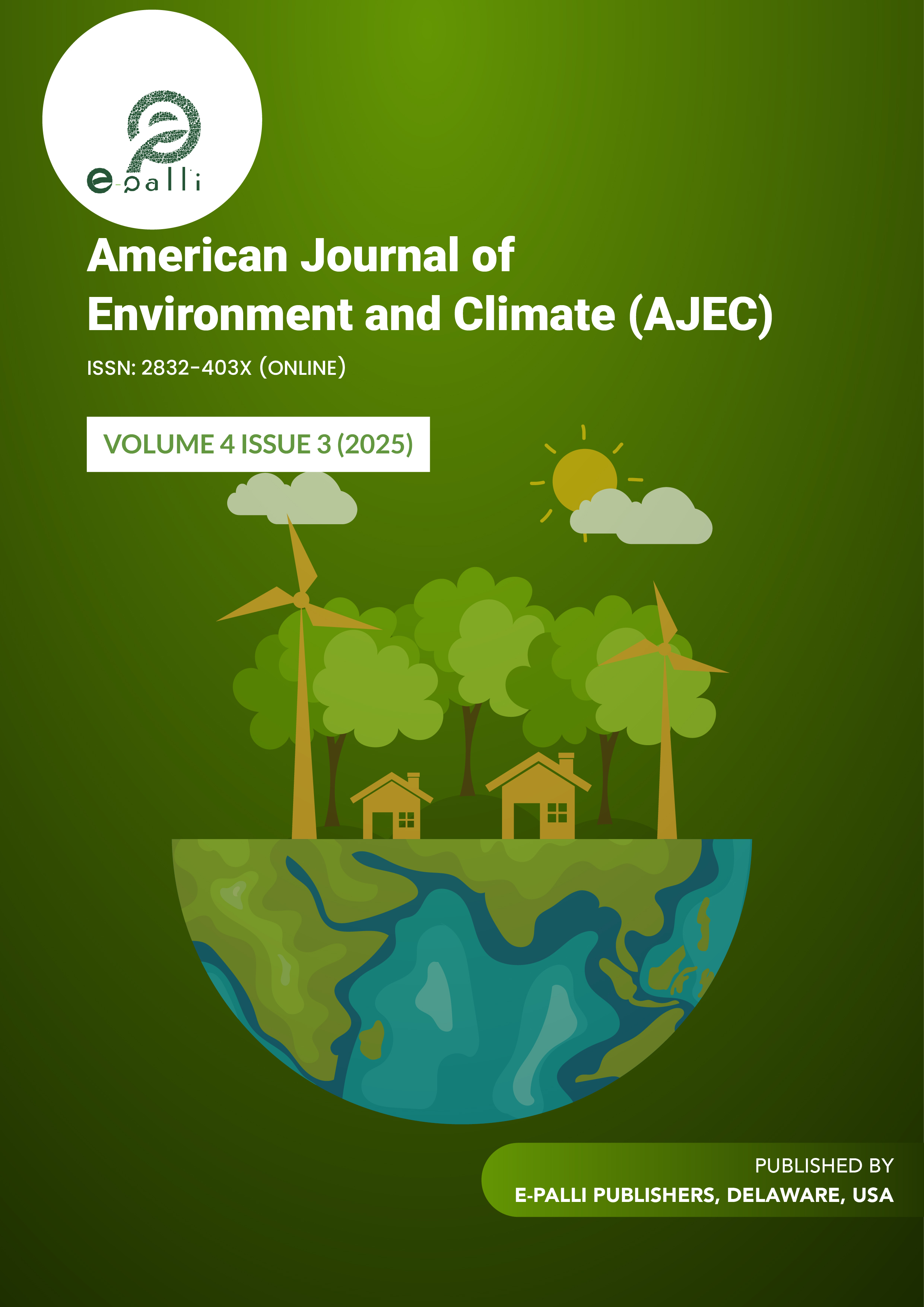Associations Between Daily PM2.5 Exposure and Respiratory Symptoms in Thai Adolescents: Evidence from Nonthaburi Province
DOI:
https://doi.org/10.54536/ajec.v4i3.5093Keywords:
Adolescent Health, Environmental Health Policy, PM2.5 Exposure, Respiratory Symptoms, Urban PollutionAbstract
Air pollution remains a critical public health concern, especially for adolescents in densely populated urban areas. This cross-sectional study investigated the relationship between daily PM2.5 exposure and self-reported respiratory symptoms among 132 high school students in Nonthaburi Province, Thailand. Over a two-month period (January–February 2025), daily PM2.5 data were retrieved from government monitoring stations, while students completed daily online symptom surveys. During the study period, the mean PM2.5 concentration was 36.2 µg/m³, more than double the World Health Organization’s recommended limit of 15 µg/m³. A notable increase in symptom prevalence, 27.6% higher on days exceeding 40 µg/m³ compared to days at or below 25 µg/m³, was observed. Logistic regression analysis further revealed that each 10 µg/m³ increase in PM2.5 was associated with a 52% higher likelihood of respiratory symptoms (OR = 1.52, 95% CI: 1.26–1.79, p < 0.001).These findings highlight the acute impact of short-term air pollution exposure on adolescent health and emphasize the need for school-based air quality monitoring, preventive education, and evidence-driven environmental policy to reduce exposure and safeguard student well-being in high-risk urban settings.
Downloads
References
Balakrishnan, K., Steenland, K., & Clasen, T. (2023). Exposure–response relationships for personal exposure to fine particulate matter (PM2.5), carbon monoxide, and black carbon and birthweight: An observational study. The Lancet Planetary Health, 7(2), 125-134. https://doi.org/10.1016/S2542-5196(23)00052-9
Brauer, M., Southerland, V. A., & Mohegh, A. (2022). Global urban temporal trends in fine particulate matter (PM2.5) and attributable health burdens: Estimates from global datasets. The Lancet Planetary Health, 6(10), 543-555. https://doi.org/10.1016/S2542-5196(21)00350-8
Chen, X., Zhao, J., Liu, M., & Li, Y. (2020). The effects of PM2.5 exposure on lung function and respiratory symptoms in children: A systematic review and meta-analysis. Environmental Research, 190, 110032. https://doi.org/10.1016/j.envres.2020.110032
D. A. (1984). Experientiallearning: Experience as the source of learning and development. Prentice-Hall. https://doi.org/10.4324/9781003449020
Ekvitayavetchanukul, P., & Ekvitayavetchanukul, P. (2023). Comparing the effectiveness of distance learning and onsite learning in pre-medical courses. Recent Educational Research, 1(2), 141-147. https://doi.org/10.59762/rer904105361220231220143511
Ekvitayavetchanukul, P., Bhavani, C., Nath, N., Sharma, L., Aggarwal, G., Singh, R. (2024). Revolutionizing Healthcare: Telemedicine and Remote Diagnostics in the Era of Digital Health. In: Kumar, P., Singh, P., Diwakar, M., Garg, D. (eds) Healthcare Industry Assessment: Analyzing Risks, Security, and Reliability. Engineering Cyber-Physical Systems and Critical Infrastructures, vol 11. Springer, Cham. https://doi.org/10.1007/978-3-031-65434-3_11Kolb,
Gauderman, W. J., Urman, R., Avol, E., Berhane, K., McConnell, R., Rappaport, E. B., Chang, R., Lurmann, F., & Gilliland, F. (2015). Association of improved air quality with lung development in children. New England Journal of Medicine, 372(10), 905–913. https://doi.org/10.1056/NEJMoa1414123
George, P. E., Thakkar, N., & Yasobant, S. (2024). Impact of ambient air pollution and socio-environmental factors on the health of children younger than 5 years in India: A population-based analysis. The Lancet Regional Health - Southeast Asia, 8, 125-139. https://doi.org/10.1016/j.lansea.2023.00188
International Agency for Research on Cancer (IARC). (2016). Outdoor air pollution: A leading environmental cause of cancer deaths. World Health Organization Report. https://www.iarc.who.int/wp-content/uploads/2018/07/pr221_E.pdf
Kawintra, T., Kraikittiwut, R., Ekvitayavetchanukul, P., Muangsiri, K., & Ekvitayavetchanukul, P. (2024). Relationship between sugar-sweetened beverage intake and the risk of dental caries among primary school children: A cross-sectional study in Nonthaburi Province, Thailand. Frontiers in Health Informatics, 13(3), 1716-1723.
Lee, J. Y., & Kim, H. (2018). Ambient air pollution-induced health risk for children worldwide. The Lancet Planetary Health, 2(7), 297-308. https://doi.org/10.1016/S2542-5196(18)30149-9
Liu, C., Yin, P., Chen, R., Meng, X., Wang, L., & Niu, Y. (2020). Ambient carbon monoxide and cardiovascular mortality: A nationwide time-series study in 272 Chinese cities. The Lancet Planetary Health, 4(11), e512–e521. https://doi.org/10.1016/S2542-5196(20)30207-3
Liu, Q., Xu, C., Ji, G., Shao, W., & Liu, H. (2017). Effect of exposure to ambient PM2.5 pollution on the risk of respiratory tract diseases: A meta-analysis of cohort studies. Journal of Biomedical Research, 31(2), 130-144. https://doi.org/10.7555/JBR.31.02.130
Mohajeri, N., Hsu, S. C., Milner, J., & Taylor, J. (2023). Urban–rural disparity in global estimation of PM2.5 household air pollution and its attributable health burden. The Lancet Planetary Health, 7(1), 245-259. https://doi.org/10.1016/S2542-5196(23)00133-X
Mathasuriyapong, P., Korcharlermsonthi, N., Ekvitayavetchanukul, P., & Ekvitayavetchanukul, P. (2025). Modeling the health burden of PM₂.₅ Forecasting hospital admissions and medical demand in Bangkok and neighboring regions. Journal of Posthumanism, 5(6), 862–873. https://doi.org/10.63332/joph.v5i6.2155
Ni, R., Su, H., Burnett, R. T., Guo, Y., & Cheng, Y. (2024). Long-term exposure to PM2.5 has significant adverse effects on childhood and adult asthma: A global meta-analysis and health impact assessment. One Earth, 10(2), 234-249. https://doi.org/10.1016/j.oneear.2024.04.087
Pongthong, S., Chantara, S., & Wiriya, W. (2022). Sources and seasonal variations of PM2.5-bound heavy metals and their health risks in Bangkok. Atmospheric Pollution Research, 13(2), 101333. https://doi.org/10.1016/j.apr.2021.101333
Singh, J., Kumar, V., Sinduja, K., Ekvitayavetchanukul, P., Agnihotri, A. K., & Imran, H. (2024). Enhancing heart disease diagnosis through particle swarm optimization and ensemble deep learning models. In Nature-Inspired Optimization Algorithms for Cyber-Physical Systems. IGI Global. https://doi.org/10.1016/j.envres.2022.02961
Tham, R., Ziou, M., Wheeler, A. J., & Zosky, G. R. (2022). Outdoor particulate matter exposure and upper respiratory tract infections in children and adolescents: A systematic review and meta-analysis. Environmental Research, 15(3), 219-232. https://doi.org/10.1016/j.envres.2022.02961
World Health Organization (WHO). (2021). WHO global air quality guidelines: Particulate matter (PM2.5 and PM10), ozone, nitrogen dioxide, sulfur dioxide, and carbon monoxide. World Health Organization Report. Retrieved from https://www.who.int/publications/i/item/9789240034228
Wu, T., Fang, Y., Zhou, Y., & Li, J. (2022). Protective effects of personal air filtration on reducing PM2.5 exposure and associated health risks in school children. Environmental Science & Technology, 56(5), 3241–3250. https://doi.org/10.1021/acs.est.1c08079
Zhang, Y., Guo, Z., Li, Q., & Zhao, Y. (2023). Effect of acute PM2.5 exposure on lung function in children: A systematic review and meta-analysis. Journal of Asthma & Allergy, 20(4), 115-130. https://doi.org/10.2147/JAA.S405929
Downloads
Published
How to Cite
Issue
Section
License
Copyright (c) 2025 Patsorn Kiatsoongsong, Patraporn Ekvitayavetchanukul

This work is licensed under a Creative Commons Attribution 4.0 International License.








